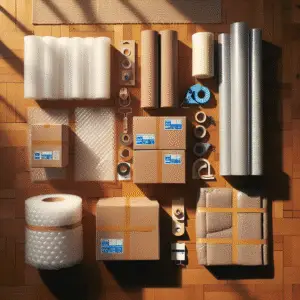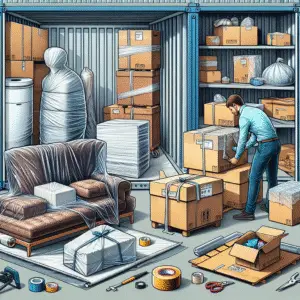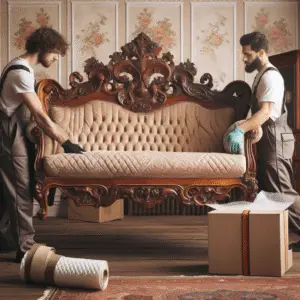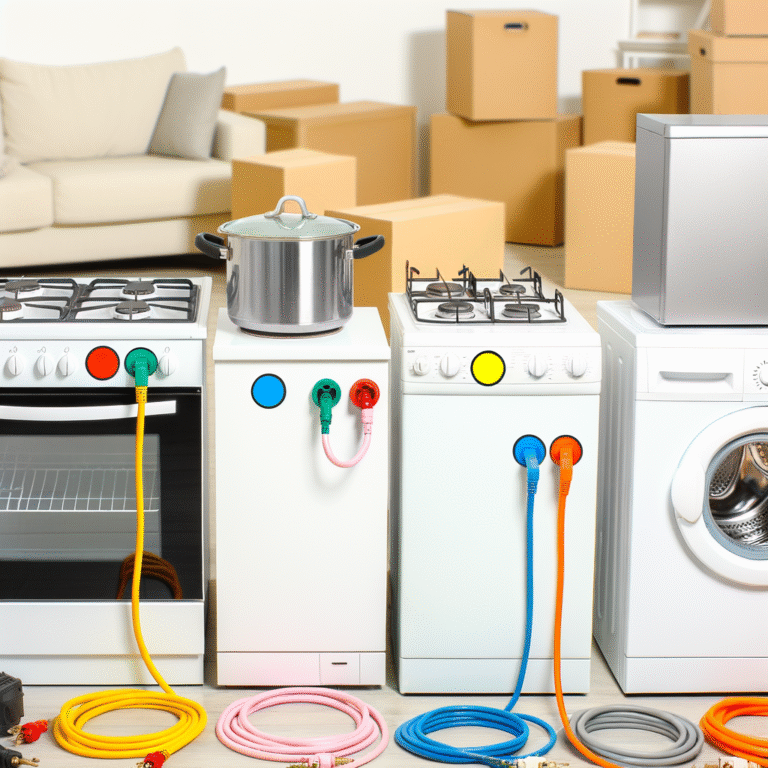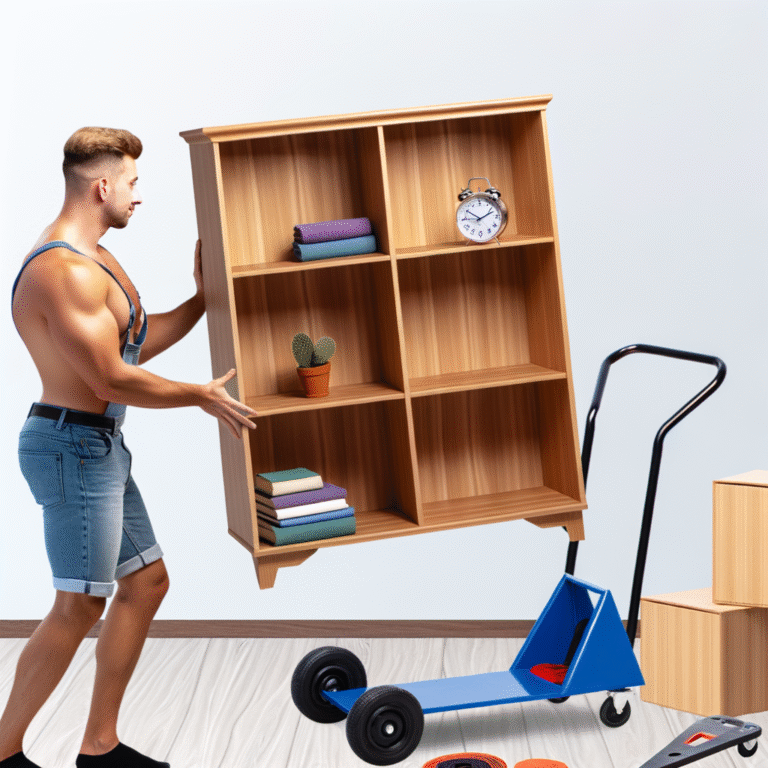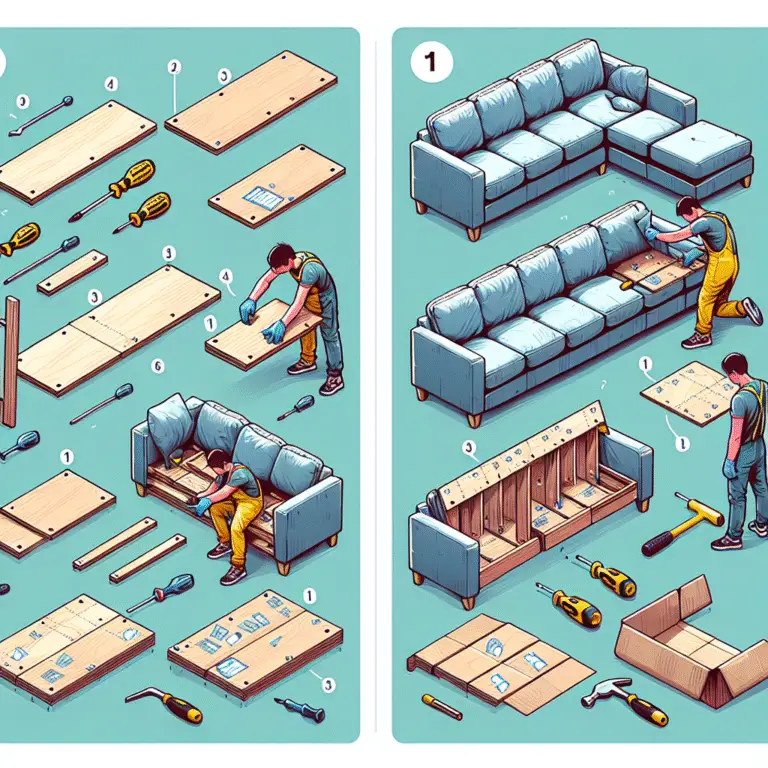How to Properly Wrap and Pack Glass Furniture Components
Moving day?
Don’t let your sleek glass coffee table or dresser mirror become shattered memories.
Glass furniture adds style and elegance to any home, but when it’s time to relocate, these fragile pieces can quickly transform into a nightmare of cracks, chips, and heartbreak.
The good news? With the right preparation and packing techniques, you can ensure your glass furniture arrives intact — without a scratch.
Understanding Glass Furniture Components
Glass plays a prominent role in modern interior design, showing up in everything from coffee table tops and shelves to cabinet inserts and glass-fronted doors. These components are usually made from either tempered or laminated glass — both known for their strength, but still vulnerable under impact or improper handling.
Tempered glass is designed to break in small, blunt pieces for safety, while laminated glass contains an interior layer that holds the shards together. Despite these safety features, both types require extra care during packing and transportation because of their brittleness and susceptibility to scratches and breaks.
Pre-Packing Preparation
Before you wrap a single corner, gather all the essential materials. Being equipped with the right tools ensures a smoother, more secure packing process.
Tools and Materials Checklist
- Packing paper (non-printed)
- Bubble wrap
- Moving blankets
- Packing tape
- Corner protectors (foam or plastic)
- Strong cardboard boxes or custom wooden crates
- Labels and permanent markers
Start by clearing and cleaning the glass thoroughly. Dirt or debris can cause scratches if trapped between layers of packing. Next, if your glass is part of a furniture structure (like a door or shelf), detach it if possible. This reduces the risk of movement and impact during transit.
Step-by-Step Guide to Packing Glass Table Tops
Step 1: Lay a Clear Packing Space
Choose a clean, flat surface with enough room to work. Lay down a blanket or foam padding on the floor or table to prevent damage while packing.
Step 2: Apply Corner Protectors
Place corner protectors on all edges of the glass; they absorb shocks and minimize the chance of cracking from edge impacts, which are the most vulnerable spots.
Step 3: Wrap Glass in Packing Paper
Carefully lay several sheets of packing paper over the glass and fold the edges over like a present. Avoid using newspaper, as the ink can transfer and stain the glass permanently.
Step 4: Add a Thick Layer of Bubble Wrap
Cover the entire glass piece with bubble wrap. Pay extra attention to the corners and overlap the wrap at least twice around. More cushioning equals better protection.
Step 5: Secure with Packing Tape
Use packing tape to seal the bubble wrap tightly — but never apply tape directly onto the glass surface, as it can leave sticky residue or even cause hairline cracks upon removal.
Step 6: Cover with Moving Blanket for Extra Protection
Wrap a padded moving blanket around the bubble-wrapped glass. It acts as a shock absorber and thermal protector — especially useful for long-distance moves where temperature changes are a factor.
Step 7: Place in a Labeled Strong Box or Wooden Crate
Finally, place the wrapped glass vertically into a sturdy, labeled box or custom crate. Fill any empty space with foam or padding to prevent shifting.
Tips for Transporting Glass Furniture Safely
The way you load and transport glass furniture matters just as much as how you pack it. Here’s how to ensure no nasty surprises when you arrive at your new place.
Keep Glass Upright
Always position glass vertically during transit, like transporting a mirror. Horizontal placement significantly increases the risk of cracks under pressure or vibrations.
Avoid Heavy Loads Next to Glass
Never place boxes or objects on top of glass-packed items. Even slight pressure can spell disaster over bumpy roads. Separate glass with soft items or allow room between stacks.
Use Furniture Dollies and Padding
Use dollies with padding when moving items out of the home and into the vehicle. This minimizes accidental thuds against door frames or walls.
Mark Boxes as “Fragile”
Label the box loud and clear: “FRAGILE – GLASS – HANDLE WITH CARE.” It’s not just for show — it alerts movers and helps avoid poor stacking choices.
Mistakes to Avoid When Packing Glass Furniture
Even seasoned movers can fall into traps when handling glass. Here are some common missteps and how to steer clear.
Using Newspaper
It might seem cost-effective, but newspaper ink smudges easily onto glass and can be hard to clean — especially on etched or frosted finishes.
Taping Directly to Glass
Skip taping objects or padding directly to the glass itself. The adhesive can leave marks or worse, cause stress fractures when removed. Always use an intermediary layer like paper or wrap.
Laying Glass Flat
A flat position invites weight imbalance and increased pressure across the surface. Always store or transport glass vertically to distribute force more safely.
Underestimating Weight
Glass components can be surprisingly heavy. Don’t attempt to lift or move large pieces without assistance or proper tools. Injuries and damage often occur from improper handling.
Storage Considerations (If Not Moving Immediately)
If you’re not moving right away and need to store your glass furniture, additional protection is vital. Improper storage can be just as damaging as a rough ride.
Choose a climate-controlled area to avoid humidity and temperature fluctuations, which can weaken the protective wrap and even affect the glass. Store glass pieces vertically using padding between each item and a solid surface underneath. Lastly, double-check your wrap for integrity — long-term exposure requires max cushioning and moisture barriers.
When to Hire Professional Movers
Sometimes, the safest route is to outsource the job entirely. If you’re dealing with large custom glass pieces, curved designs, or multiple fragile items, bringing in professionals can save time—and costly replacements.
Lack of proper packing materials or equipment is another red flag. Movers are equipped with crates, harnesses, and know-how. They’re also insured, which means added peace of mind. According to the American Moving & Storage Association, “Hiring certified movers reduces liability and ensures high-value items receive industry-standard protective care.”
Conclusion
Glass furniture can elevate any room — don’t let moving turn it into a broken disaster. From prepping your supplies and wrapping each pane with care to choosing the right methods for transport and storage, each step matters.
Always plan ahead, use the best materials, and know your limits. Whether you’re taking on a DIY move or relying on pros, the goal is simple: get your stunning glass pieces into your new space, safe and sound.
A little patience and preparation go a long way — and could save you hundreds in replacements. Because when it comes to moving fragile furniture, careful packing isn’t a task — it’s an investment.
“`



